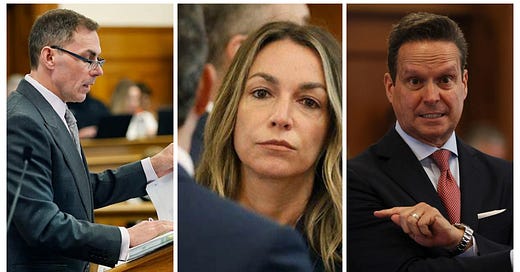Prosecutors University Lesson #3: Openings and Closings
As the gladiatorial combat in the Karen Read trial begins, it's useful to look at what makes effective openings and closings
By Brett Talley and Alice LaCour
The Karen Read re-trial is upon us. Weeks of evidence and testimony will be presented, but what most people are looking forward to are the trial’s beginning and end — the opening statements and closing arguments.

In a trial, the closest thing to gladiatorial combat are the openings and the closings, when top-flight attorneys have an opportunity to show their skills in direct contrast to their opponents. But these stages of a trial provide more than just drama; they are critical to presenting and contextualizing the evidence.
Let’s start where trials begin, with the opening statement. The word “statement” is carrying a lot of weight here; these are not arguments. And in fact, making an argument will draw an objection from your opponents. Instead, the purpose of the opening is to explain to the jury what the case is all about. Why are they here? What will they see and learn over the course of the trial? What evidence will come in and what witnesses will they hear from?
Closings are sexier, but in many ways, a mistake in the opening can be fatal. As Alice has often said on the podcast, the opening is like the building of a bookcase where all the evidence presented during trial is going to fit. A good opening primes the jury for what they are going to hear, allowing the rest of the trial to feel like a fait accompli, a march through the evidence to the inevitable conclusion your side wants to see.
For those who are not paid subscribers, our next free article will drop next Monday morning. For those who are, please read on.
Keep reading with a 7-day free trial
Subscribe to True Crime Times Substack to keep reading this post and get 7 days of free access to the full post archives.




